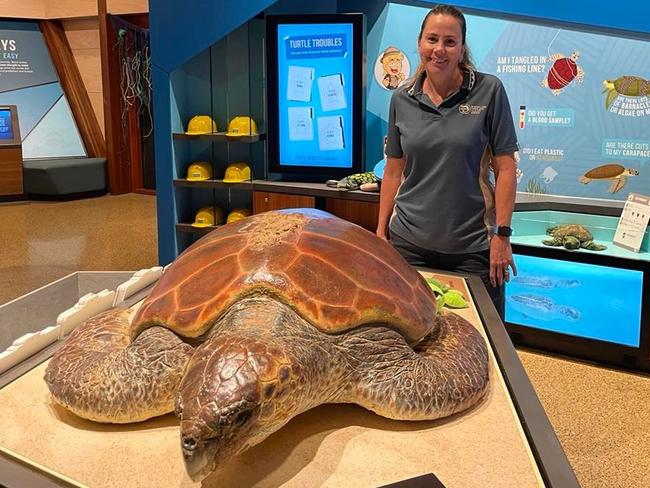Why more male turtles should hatch at Mon Repos in 2022
Rangers are predicting a higher than usual amount of male turtle hatchlings on the Qld east coast in 2022. This is why:
Bundaberg
Don't miss out on the headlines from Bundaberg. Followed categories will be added to My News.
Nestled in the bushland, rangers at the Mon Repo Turtle Centre prepare to welcome turtle season back to Bundaberg in 2022.
Mon Repos boasts the largest concentration of nesting marine turtles in eastern Australia, and ranger-in-charge Cathy Gatley said on Friday it was now all hands on deck.
“It’s an exciting time. We’ve got lots of activity on the beach and lots of people here excited about seeing the coastline and the turtles,” she said.
The first nesting turtles are expected to arrive ashore within the first weeks of October.
The nesting period is anticipated to peak over Christmas, with the first hatchlings making their way across the sand in January 2023.
“We start our turtle tours in early November, when we start to see turtles arriving almost every night,” Ms Gatley said.
Training for volunteers has already begun, with rangers making sure the dunes are free of any non-native weeds and vines that could prevent the turtles from reaching their ideal laying spot.
Ms Gatley said more male hatchlings could be produced in 2022, because of the higher rainfall La Nina is expected to deliver on the east coast, keeping the nests cooler than usual.
“The sex is determined by the nest temperature” she said. “If we get heaps of rain that may cool the nests down too much.”
Heavy rains and storms may also impact the safety of the dunes, with high tides creeping close to nests.
“We do relocate nests from low down on the beach to higher up in the dunes if they do lay in a spot that isn’t suitable,” Ms Gately said.

Heavy rains and flash flooding also damage the sea grasses green turtles thrive on, with possible links to this year’s flooding and sea turtle mass deaths on the Cooloola and Fraser Coasts.
“This can be a real issue, it can affect the sea grass which is the green sea turtles’ main food source.”
Bookings are already open for laying and hatching experiences, and Ms Gately said it should be a busy season.
“Bookings have been really busy, so I think we will see a good number of visitors coming to the region.”
Ms Gately encouraged all locals and visitors to the region to be mindful of light pollution during this time of year, with the turtles easily distracted by onshore light.
“We encourage everyone to think about their light pollution, you don’t have to be living right at the front of the coastal areas,” she said.
“It’s accumulated glow that affects both our nesting and hatching turtles that are looking for dark horizons to find their way.”




